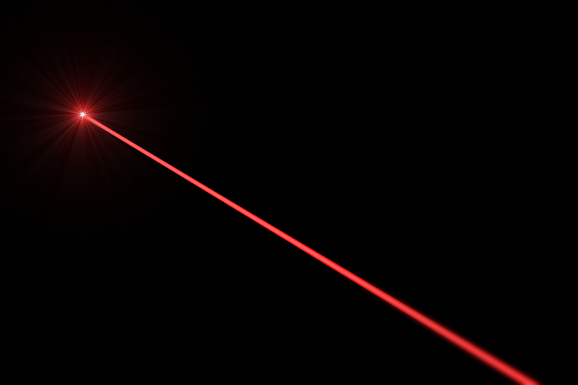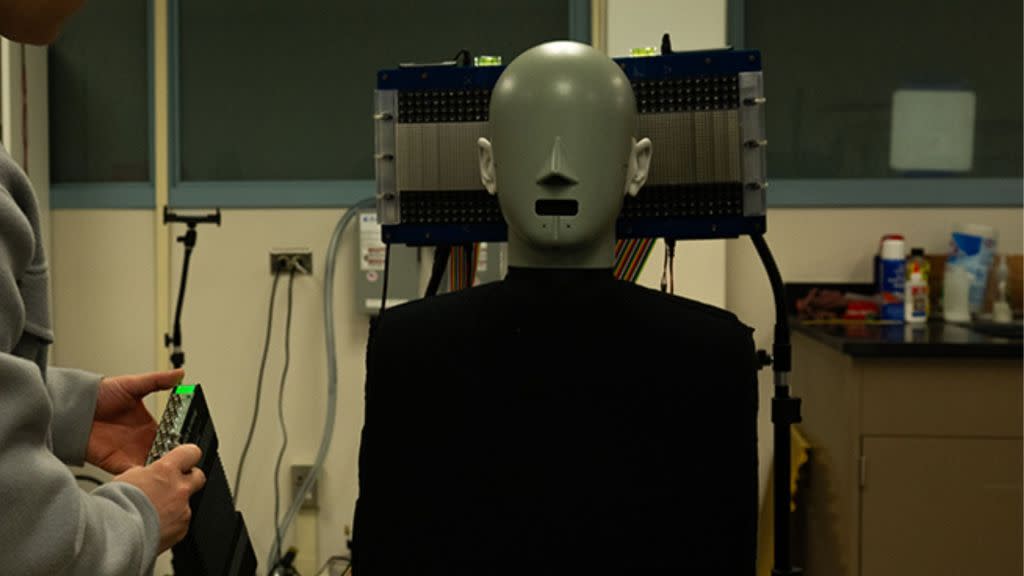In a collaborative effort spanning multiple German institutes, researchers have pioneered a groundbreaking method for bending laser beams using sound waves alone, marking a significant leap forward in laser technology. This innovative approach, outlined in a recent press release, has the potential to revolutionize the way we manipulate high-intensity laser beams in various scientific applications.
High-intensity lasers have become indispensable tools in scientific research, from probing the depths of particle accelerators to attempting to replicate nuclear fusion on Earth. However, the traditional use of objects like lenses, prisms, and mirrors to direct these powerful beams has its limitations. The increasing intensity of the beams not only damages these objects but also interferes with experimental setups. Recognizing these challenges, a diverse team of researchers from institutes including the Technical University of Darmstadt, Aalen University of Applied Sciences, Universität Hamburg, and others embarked on a quest to find a way to deflect laser beams without material contact.
The concept of an “invisible grating” made of air emerged as a potential solution. The researchers hypothesized that a grating created using air, made visible through the manipulation of sound waves, could offer a safe and interference-free method of deflecting powerful lasers. The team utilized special loudspeakers to craft an optical grating with dense and sparse areas of air. Similar to how differences in air density bend light in the Earth’s atmosphere, the density variations in the grating could be harnessed to bend laser beams with precision.
 Yannick Schrödel, a PhD student at DESY involved in the experiments, highlighted the superiority of deflecting light by diffraction grating compared to atmospheric deflection. The initial experiments involved a laser with a peak output of 20 gigawatts, equivalent to the power emitted by two billion LED bulbs. Remarkably, the team achieved deflections without any physical contact, overcoming the potential damage to mirrors and prisms associated with high-energy laser beams.
Yannick Schrödel, a PhD student at DESY involved in the experiments, highlighted the superiority of deflecting light by diffraction grating compared to atmospheric deflection. The initial experiments involved a laser with a peak output of 20 gigawatts, equivalent to the power emitted by two billion LED bulbs. Remarkably, the team achieved deflections without any physical contact, overcoming the potential damage to mirrors and prisms associated with high-energy laser beams.
In their initial experiments, the team achieved a deflection efficiency of 50 percent, a promising result that sets the stage for further exploration. However, challenges remain, especially in scenarios involving particle accelerators and fusion energy, where the entire laser beam needs to be deflected.
 Christoph Heyl, a scientist at DESY leading the research study, explained the use of high-intensity sound waves, reaching about 140 decibels, which is in the ultrasound range. Fortunately, these frequencies are beyond the range of human hearing, resembling the sound level of a jet engine a few meters away. This opens up new possibilities for using sound as a switch for high-power lasers, expanding the horizons of modern optics.
Christoph Heyl, a scientist at DESY leading the research study, explained the use of high-intensity sound waves, reaching about 140 decibels, which is in the ultrasound range. Fortunately, these frequencies are beyond the range of human hearing, resembling the sound level of a jet engine a few meters away. This opens up new possibilities for using sound as a switch for high-power lasers, expanding the horizons of modern optics.
The implications of this research go beyond laser pulse deflection. Heyl envisions a future where contactless control of light becomes a norm, extending to applications beyond our current imagination. The research findings have been published in the prestigious journal Nature Photonics.
RELATED STORIES:
- https://www.azooptics.com/News.aspx?newsID=28446#:~:text=An%20interdisciplinary%20research%20team%20has,maintains%20the%20beam’s%20initial%20quality.
- https://www.sciencedaily.com/releases/2023/10/231003104754.htm
- https://newatlas.com/science/invisible-grating-optical-laser-air-sound-acoustics/
- https://ts2.shop/en/posts/using-air-to-deflect-laser-beams-a-novel-method
- https://www.nature.com/articles/news.2009.360
TAKE ACTION:
- https://lasers.llnl.gov/education/how-lasers-work#:~:text=A%20laser%20is%20created%20when,orbit%20around%20the%20atom’s%20nucleus.
- https://www.wikihow.com/Make-a-Laser
- https://www.desy.de/news/news_search/index_eng.html?openDirectAnchor=2951#:~:text=The%20innovative%20technique%20uses%20sound,DESY%20and%20Helmholtz%20Institute%20Jena.
- https://phillips-safety.com/laser-safety/6-examples-of-lasers-and-how-to-use-them-safely/
- https://www.arroyoinstruments.com/blog/7-uses-of-laser-technology-you-probably-didnt-know-about/






